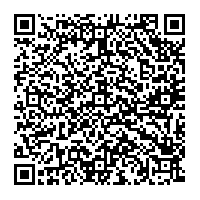Q-Switch Laser treatments have gained popularity for their effectiveness in addressing various skin concerns, including tattoo removal, pigmentation issues, and skin rejuvenation. However, it's crucial to prioritize safety when considering these treatments. In this article, we will explore the ins and outs of Q-Switch Laser safety, helping you make informed decisions before undergoing any procedure.
Understanding Q-Switch Laser Technology
What is a Q-Switch Laser?
Q-switch lasers are advanced medical devices that produce high-intensity pulses of light to target specific pigments in the skin. These lasers are designed to be precise and effective in treating various skin conditions. Understanding the technology is the first step in ensuring your safety during treatment.
How Does It Work?
Q-Switch Lasers work by emitting extremely short bursts of energy, measured in nanoseconds. This energy is absorbed by the targeted pigment or ink particles, breaking them down into smaller fragments. The body's natural processes then eliminate these fragments, leading to the desired treatment outcomes.
Importance of Safety in Q-Switch Laser Treatments
Safety should be a paramount concern when considering any medical procedure. Q-Switch Laser treatments, while effective, come with their own set of safety considerations that every patient should be aware of.
Preparing for Your Q-Switch Laser Treatment
Consultation with a Dermatologist
Before undergoing Q-Switch Laser treatment, consulting with a qualified dermatologist is essential. They will assess your skin's condition and discuss your treatment goals, ensuring you are a suitable candidate for the procedure.
Skin Assessment
Your dermatologist will conduct a thorough assessment of your skin to identify any underlying issues that might affect the treatment. Skin type, pigmentation, and the presence of any tattoos or marks are essential factors in this evaluation.
Pre-Treatment Guidelines
Your practitioner will provide you with specific guidelines to prepare for the treatment. These may include avoiding sun exposure, discontinuing certain skincare products, and refraining from self-tanning methods.
During the Treatment
What to Expect
During the Q-Switch Laser treatment, you may experience a sensation similar to the snapping of a rubber band against your skin. However, this discomfort is typically well-tolerated by most patients.
Protective Measures
Both the patient and the practitioner should wear protective eyewear to shield their eyes from the laser light. Additionally, the treatment area should be adequately cleaned and prepped to minimize the risk of infection.
You May Also Like: The Link Between Diet and Skin Health
Post-Treatment Care
Immediate Aftercare
After the treatment, it's crucial to follow your practitioner's post-care instructions diligently. These may include applying special ointments, avoiding direct sunlight, and keeping the treated area clean.
Recovery Timeline
The recovery period varies depending on the specific treatment and individual factors. Your practitioner will provide a timeline for when you can expect to see results and fully recover.
Recommended For You: The Link Between Diet and Skin Health
Potential Risks and Side Effects
Temporary Side Effects
Temporary side effects of Q-Switch Laser treatment may include redness, swelling, and a mild burning sensation. These effects usually subside within a few days.
Rare Complications
While Q-Switch Laser treatments are generally safe, rare complications like scarring, hyperpigmentation, or hypopigmentation can occur. These risks underscore the importance of choosing a qualified practitioner.
Don't Proceed Without Reading This: Skin Cancer Awareness: Detection, Prevention, and Early Intervention
Choosing a Qualified Practitioner
Qualifications and Experience
Selecting a qualified and experienced practitioner is crucial for a safe Q-Switch Laser treatment. Verify that your practitioner is trained in dermatology or a related field and has experience with the specific treatment you seek.
Checking Credentials
Don't hesitate to ask for your practitioner's credentials and certifications. Ensure they operate in a licensed medical facility, and their equipment is up-to-date and well-maintained.
Questions to Ask Your Practitioner
Before committing to a Q-Switch Laser treatment, ask your practitioner important questions, such as:
- What are the expected results?
- What is the treatment cost?
- How many sessions are required?
- What safety measures are in place?
- What is the practitioner's experience with this treatment?
Conclusion
Q-Switch Laser treatments can provide remarkable results for various skin concerns. However, ensuring your safety throughout the process is paramount. By understanding the technology, following pre- and post-treatment guidelines, and selecting a qualified practitioner, you can maximize the benefits of Q-Switch Laser treatment while minimizing potential risks.
Frequently Asked Questions (FAQs)
Is Q-Switch Laser treatment painful?
Q-Switch Laser treatment can cause some discomfort, often described as a rubber band snapping against the skin. However, most patients find it tolerable.
How long does it take to recover from a Q-Switch Laser treatment?
Recovery times vary depending on the specific treatment and individual factors. Your practitioner will provide you with a recovery timeline.
Are there any long-term side effects of Q-Switch Laser treatment?
Long-term side effects are rare but may include scarring, hyperpigmentation, or hypopigmentation. Choosing a qualified practitioner is essential to minimize these risks.
Can Q-Switch Laser treatment eradicate tattoos?
Q-Switch Laser treatment is highly effective in tattoo removal. However, complete removal may require multiple sessions and depend on the tattoo's size, color, and age.
Is Q-Switch Laser treatment suitable for all skin types?
Q-Switch Laser treatments can be customized to suit different skin types. Your dermatologist will assess your skin and recommend the most suitable approach for you.


